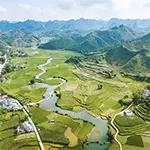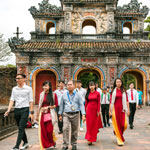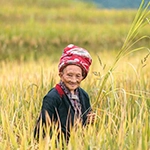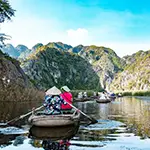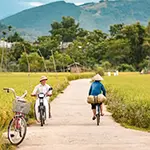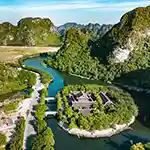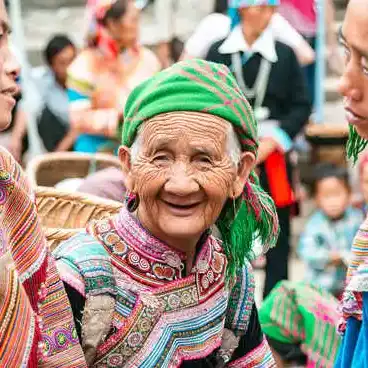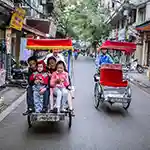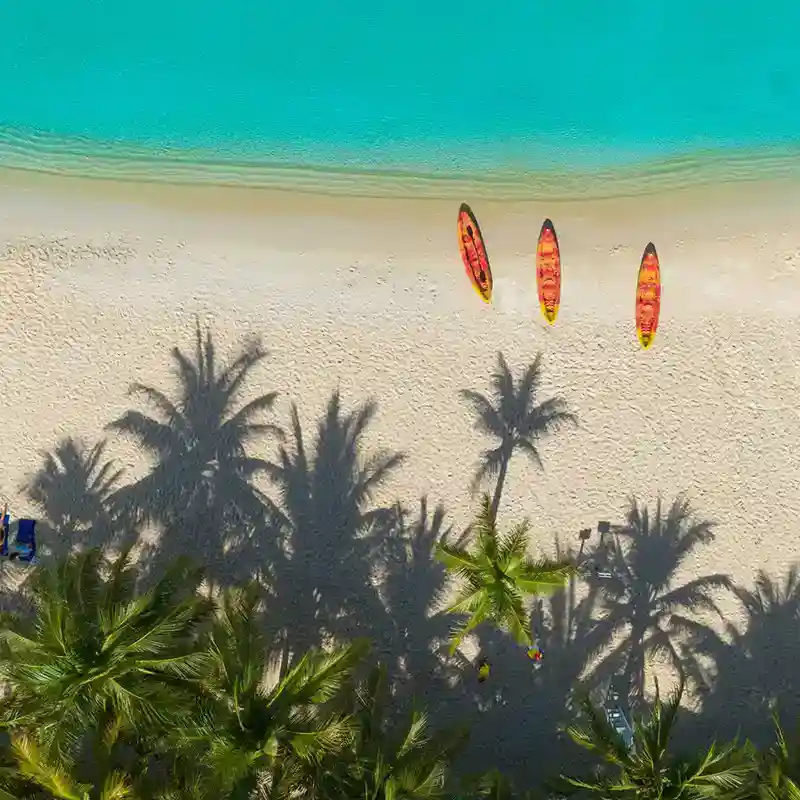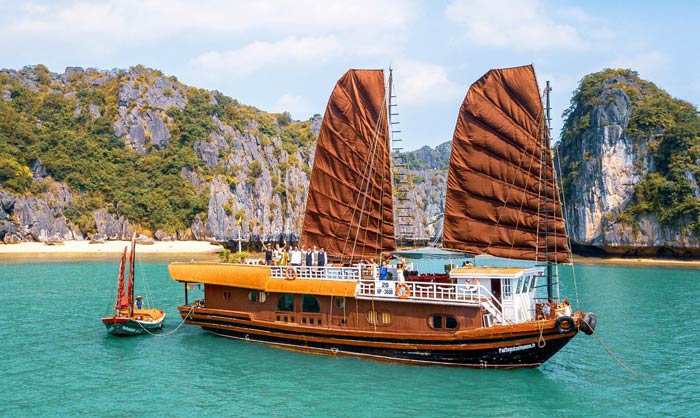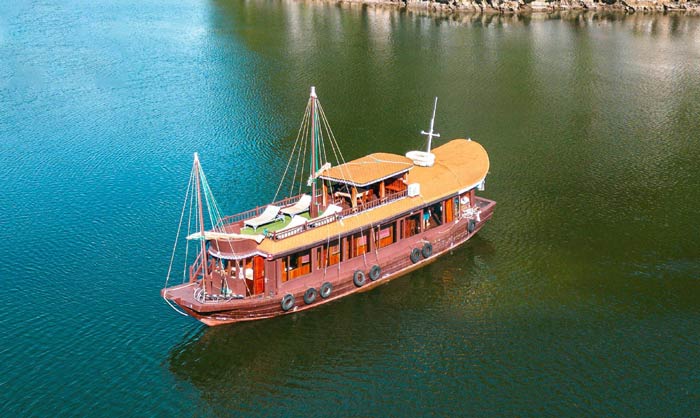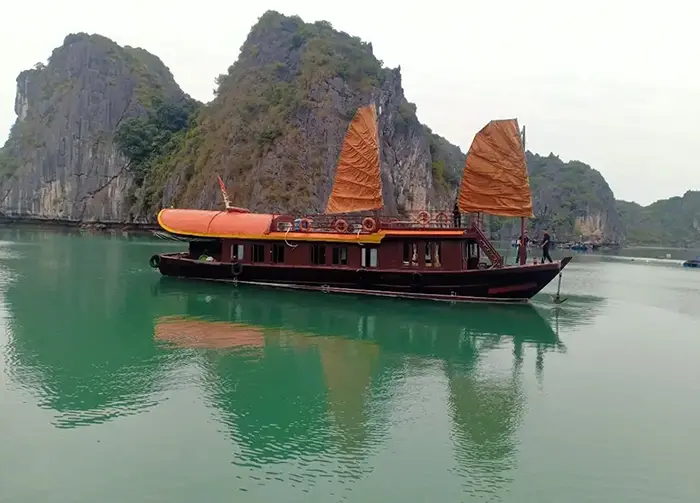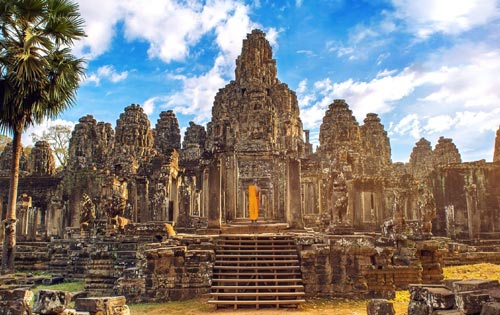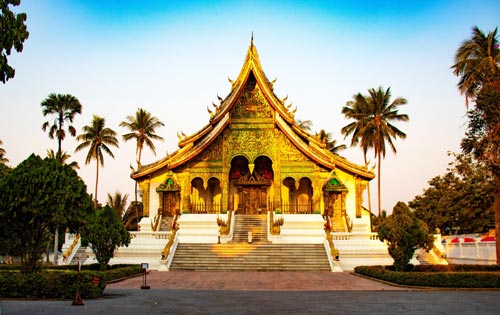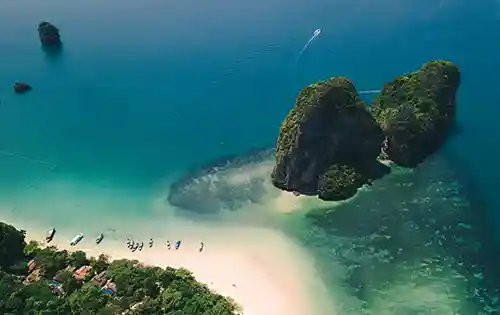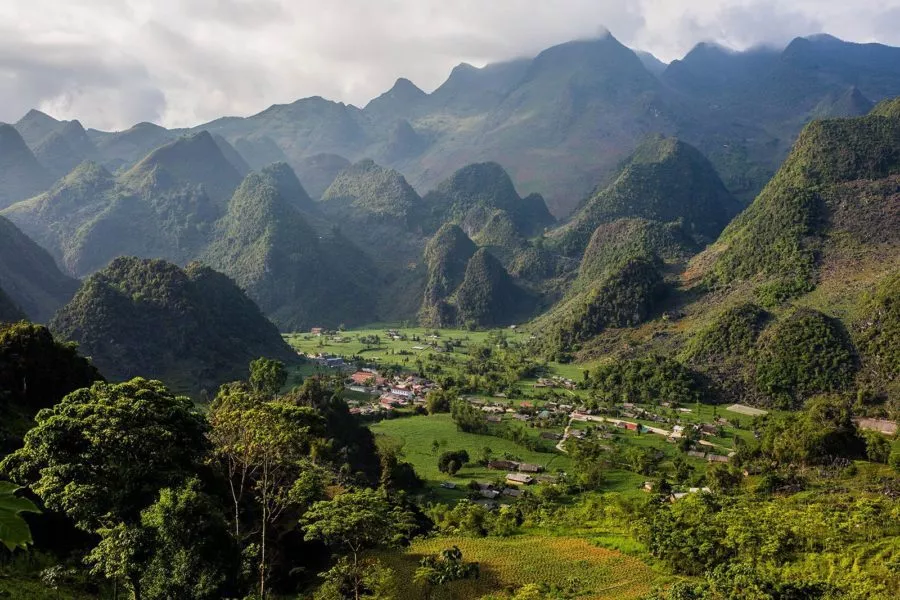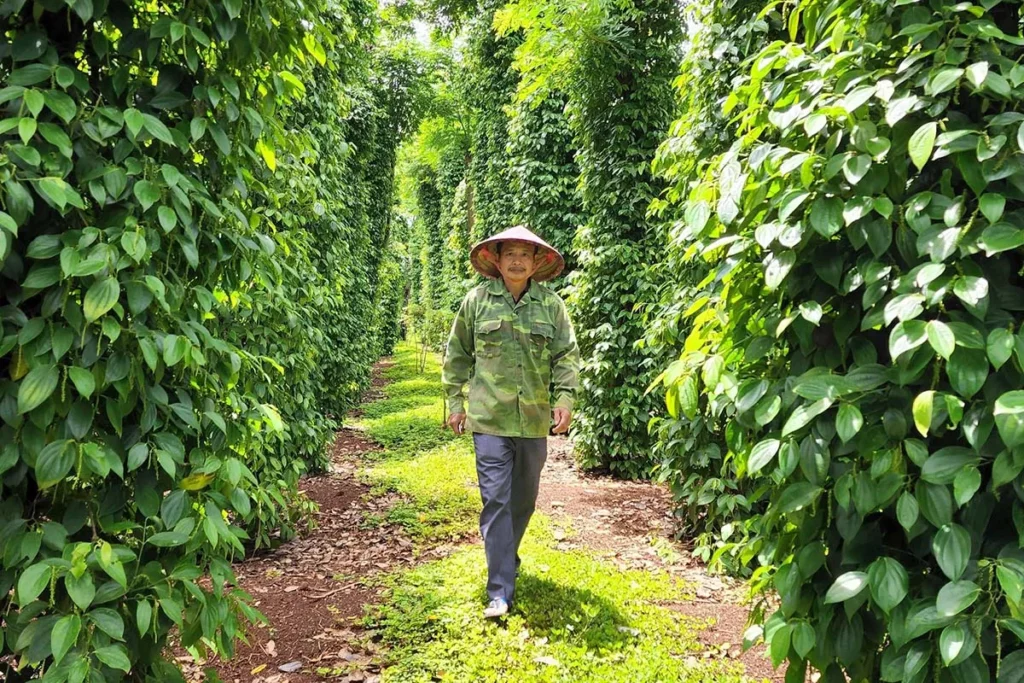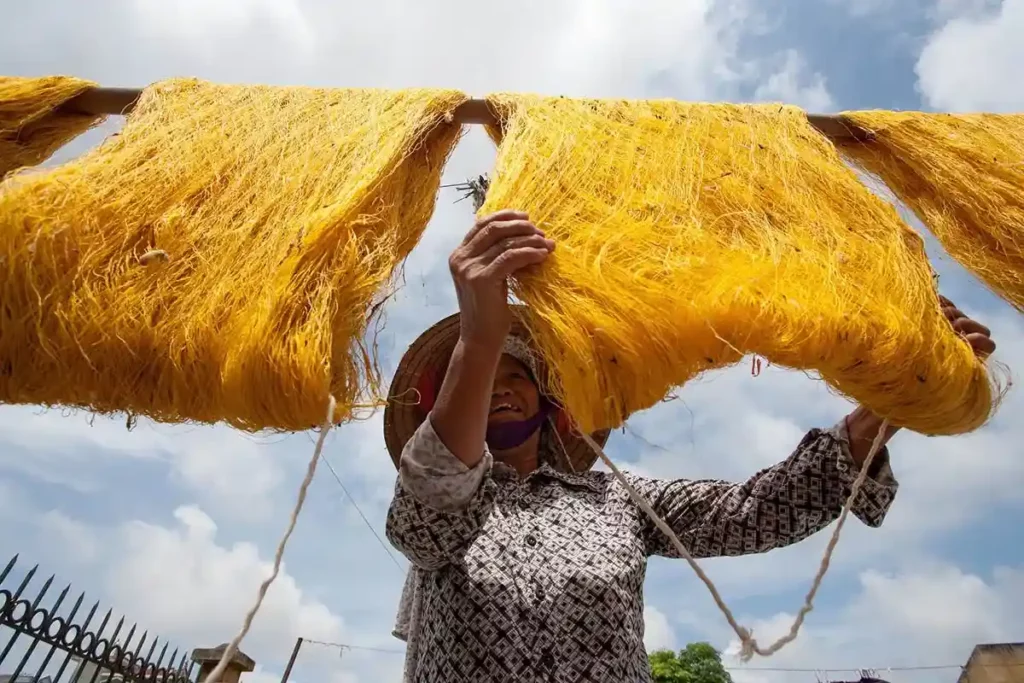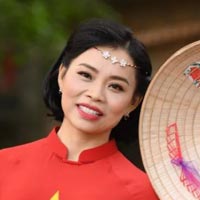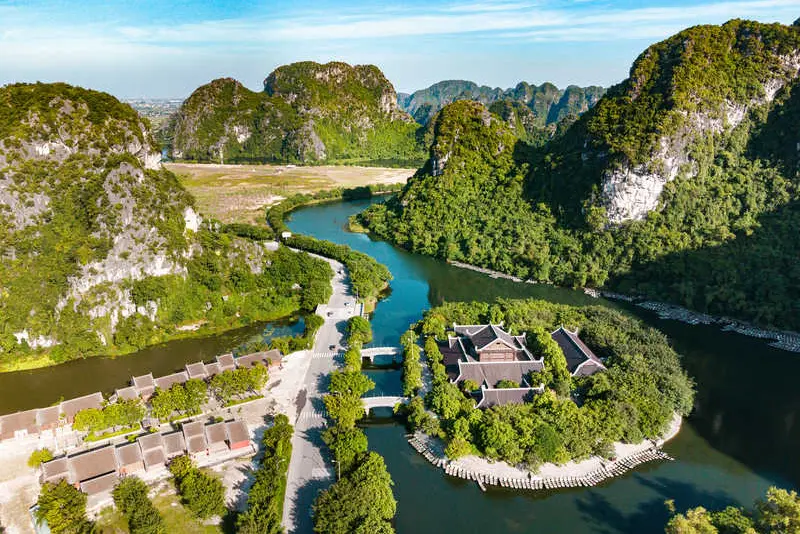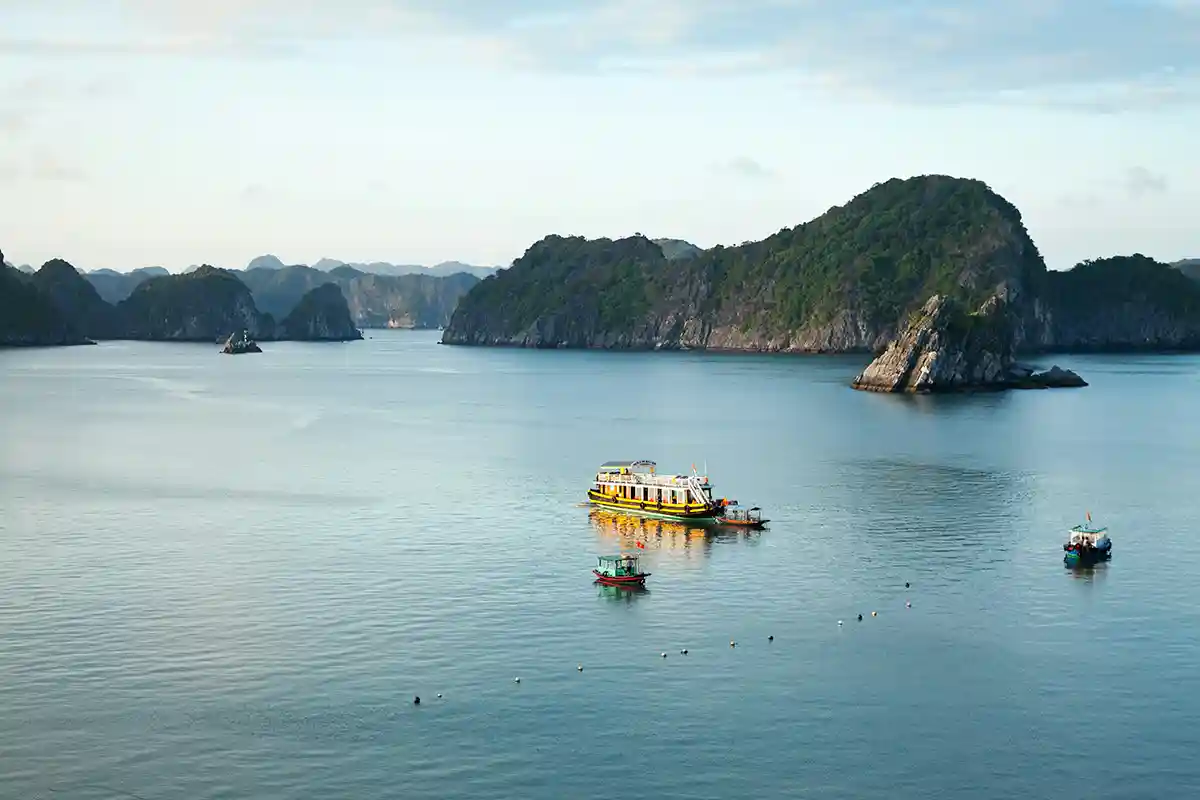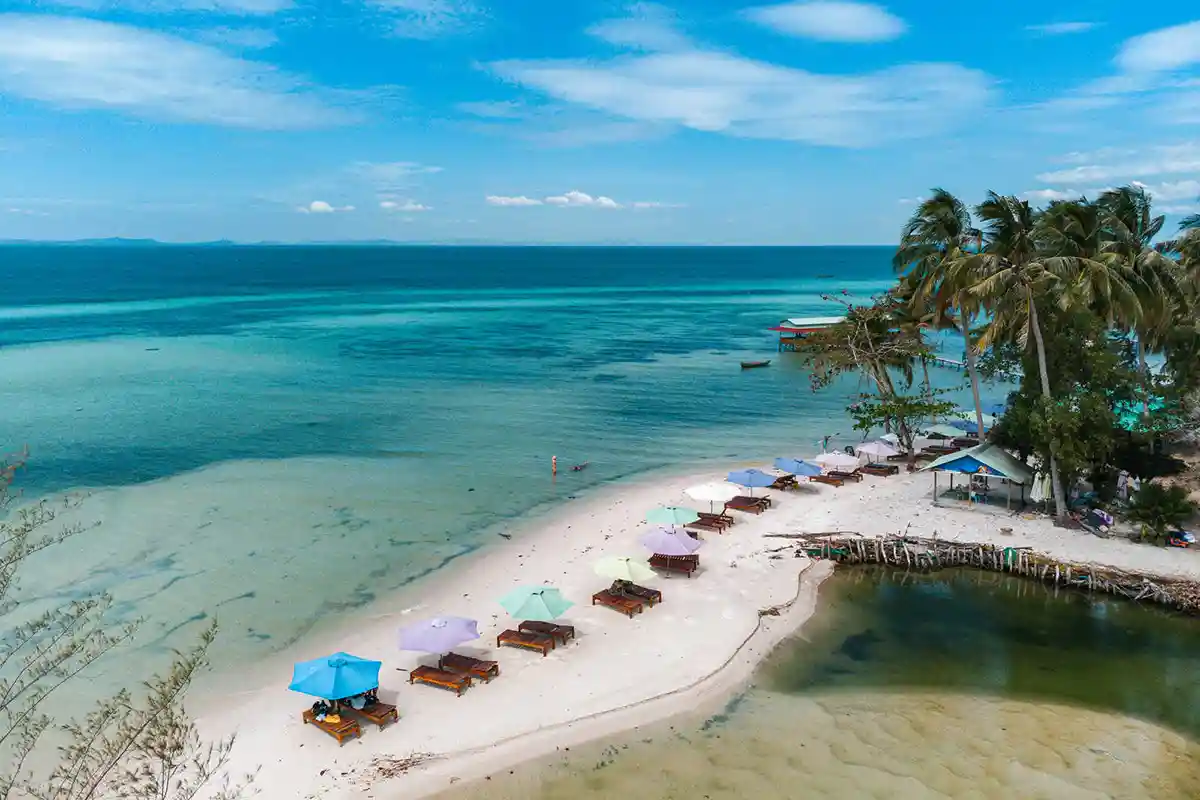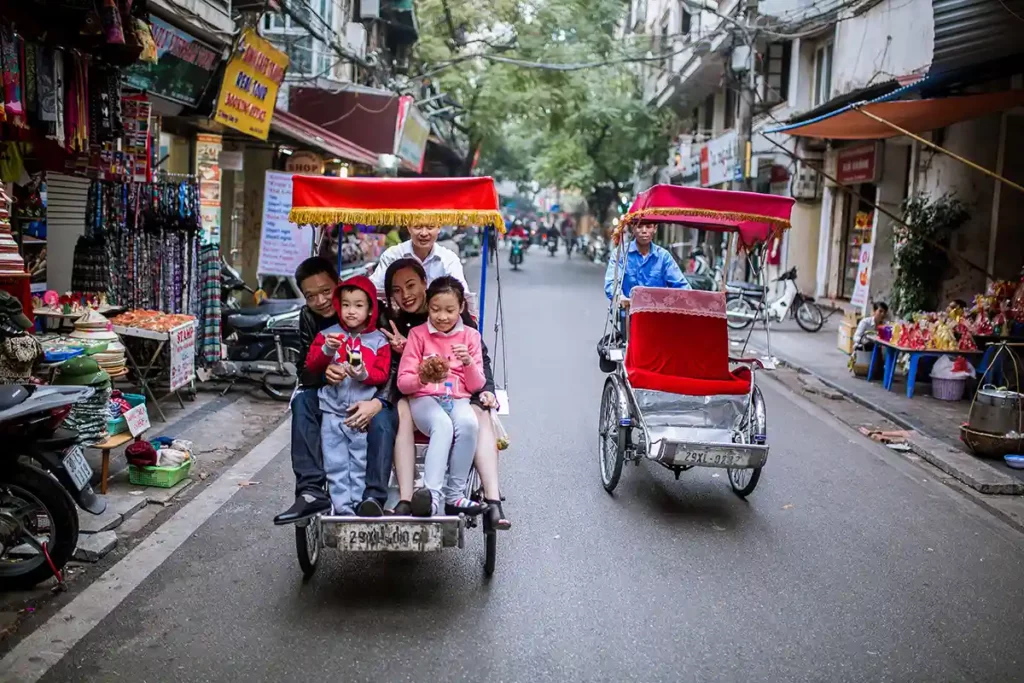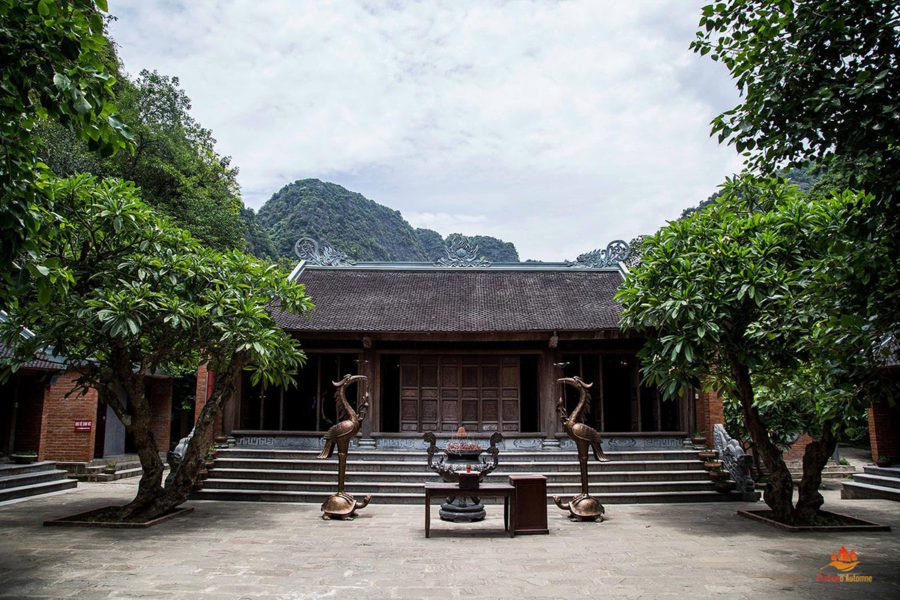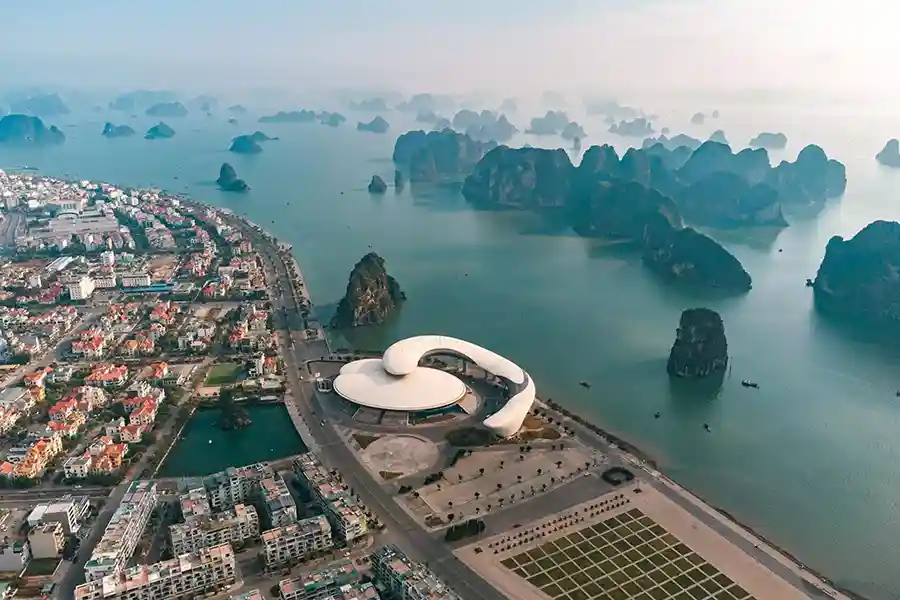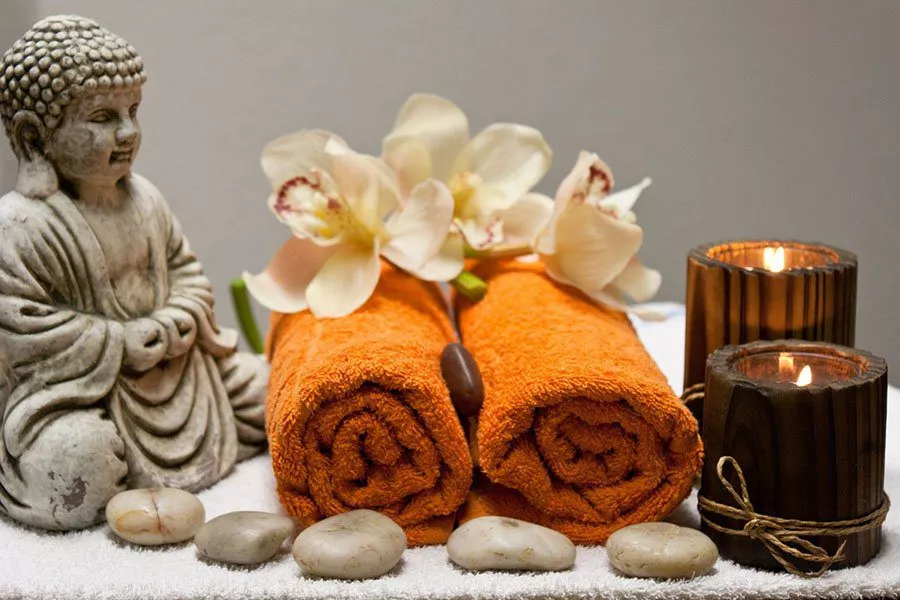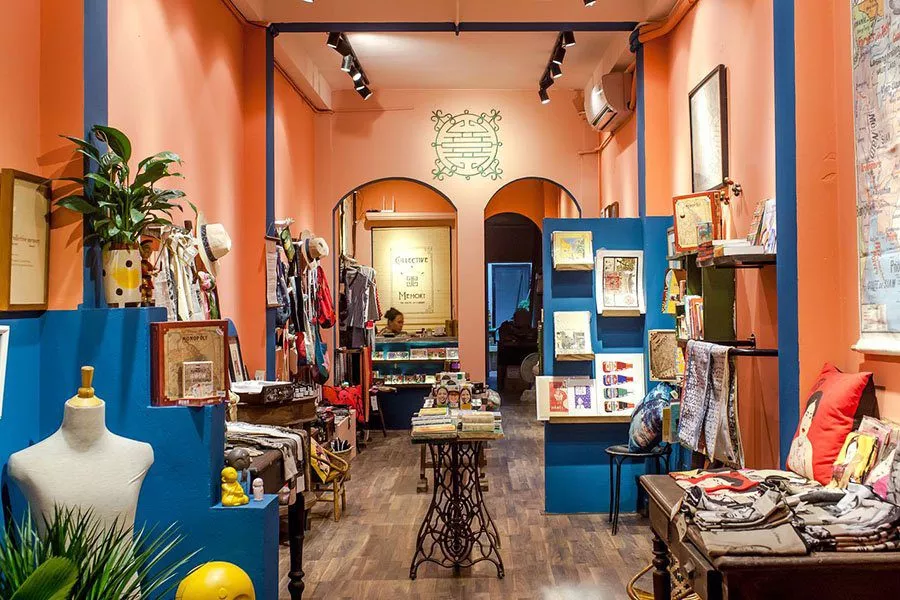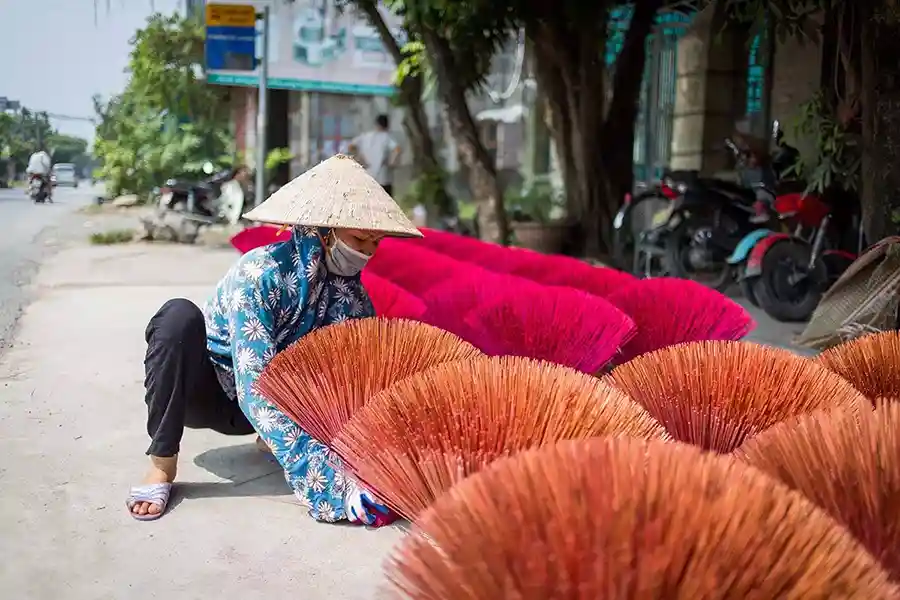Are you wondering if November is a good month to travel to Vietnam? In this article, we will tell you everything: the climate(s), preparations, the best itineraries, and all our top tips to fully enjoy it.
We can already tell you this: November is certainly the best month to discover the north of Vietnam, which is adorned with autumn colors.
Feel free to contact us to organize your stay in November!
The weather in the different regions
November is one of the best months to visit North Vietnam, where the weather is dry and sunny. Hanoi will be temperate, but expect cooler weather in the mountain resorts of Sapa and Mu Cang Chai, where by the end of the month you’ll feel the winter chill. It’s also one of the best months for a cruise in Halong Bay. So, bring warm clothes along with your sun hat and sunscreen!
In coastal Central Vietnam, the northeast monsoon is still at its peak, with heavy storms and prolonged rains, as well as knee- or waist-high flooding, particularly in Hoi An. If you decide to go there (which we do not recommend!), you’ll need to bring rain gear! Despite the rains, expect average temperatures of about 23-26°C (73-80°F). As you can understand, although there are sunny spells, it’s far from the best time for a beach vacation (Nha Trang receives nearly half of its annual rainfall in October and November). Inland, the Central Highlands are then cool and mostly dry — perfect for adventure activities.
In the south of the country, the rainy season is ending, and the Mekong Delta, beaches, and islands offer a much better face than in September and October. Early November still sees plenty of intermittent, potentially heavy rain, but late November is mostly dry. In Ho Chi Minh City, the average temperature is 27°C (81°F). If you’re visiting the south of the country, pack a light rainproof jacket and/or umbrella, but for the most part, light summer clothing will suffice.
High tourist season
November marks the beginning of the winter high season, a period during which international visitors arrive in large numbers. Consequently, expect some crowding in the most popular tourist spots, such as Halong Bay. Therefore, it is wise to book your accommodation in advance in Hanoi, Ho Chi Minh City, and popular beach resorts like Phan Thiet and Phu Quoc.
Nevertheless, airfares to Vietnam remain reasonable in November. If you are on a budget, note that airfares and hotel rates skyrocket in December, so it is more prudent to come in November.
Where to go in November ?
The weather is ideal for visiting Halong Bay, although you can expect double the crowds during this high season. The humid haze of January and the following months has not yet set in, and this time of the year offers the best chance to enjoy deeply blue skies.
Vung Vieng floating village in Halong bay
Although popular among Chinese and Vietnamese visitors, the off-the-beaten-path Ban Gioc waterfall receives few foreign visitors. This works to your advantage! This magnificent series of waterfalls, located at the northeastern tip of Vietnam, is fed by the Quay Son River and marks the border with China. The cascades stretch for almost a quarter of a mile (300 meters) and weave through bamboo groves and the forest. Bamboo raft owners will take you close enough to feel the mist, and you can swim in the jade-colored pools. Bring your passport to obtain an on-site foreign visitor permit.
Ban Gioc watefalls, Cao Bang. Photo : Mathieu Arnaudet
If sunny beach holidays appeal to you, the south of Vietnam is calling. You are spoiled for choice, with Phan Thiet, Mui Ne, Ho Tram, and Long Hai among the most popular options. One of the main attractions at this time of the year is Phu Quoc Island: it combines beautiful beaches, dense tropical forest, numerous adventure activities, and a wide range of accommodations from budget to luxury. Moreover, it has fishing villages, Buddhist shrines, and colorful markets for when you’ve had enough of beach time!
Sunset in Phu Quoc. Photo : Mathieu Arnaudet
The itinerary we recommend for November
Since the season is perfect for exploring Northern Vietnam, below you will find the details of a 15-day itinerary that takes you through the provinces of Cao Bang and Ha Giang, not to mention Ba Be Lake, Halong Bay, and Ninh Binh.
If you have more time, you can add a beach extension in the south of the country with a visit to Ho Chi Minh City and then relax on Phu Quoc Island.
Day 1 – Hanoi old quarter discovery
The program :
# Cyclo ride;
# Walk around Hoan Kiem Lake;
# Lunch with the specialty of cha ca (grilled fish).
# Visit to the Temple of Literature;
# Dinner at Quan An Ngon restaurant.
Day 2 – Hanoi – Co Loa Cidatel – Ba Be
You set off towards Ba Be Lake, passing through the ancient citadel of Co Loa, which was built in the 3rd century BC under the dynasty of King An Duong Vuong.
Lunch in a local restaurant in Thai Nguyen.
You then continue through the hills of tea trees, fan palms, mountains, and ethnic villages of the Tays. Arrival at Pac Ngoi village on the edge of Ba Be Lake, which is located in the heart of Ba Be National Park, staying with a Tay family in a large traditional stilt house, for a cup of warm tea as a welcome and to get acquainted with the host family, then a walking tour around the village to discover the life and activities of the Tays.
Trekking in Ba Be national park. Photo : Mathieu Arnaudet
Day 3 – Ba Be National Park
After breakfast with your hosts, you set off for a boat excursion on Ba Be Lake to discover stunning landscapes. With limestone cliffs and lush vegetation-covered mountains around, it’s like a Halong Bay in the mountains.
The lake is located in the heart of Ba Be National Park, covers 500 hectares, and is divided into three parts (Pelam, Pelu, and Peleng). It is the largest natural lake in Vietnam and is considered one of the twenty most unique lakes on the planet.
In the afternoon, enjoy a bike ride through the forest and rice fields of the park. The park is a tropical rainforest area home to hundreds of species of plants and wild animals (mammals, butterflies, fish, turtles, birds, etc.).
Visit en route the beautiful Hua Ma cave (meaning “horse head”) and traditional villages of the Tay and Nung ethnic groups.
Ba Be National Park, Vietnam. Photo : Mathieu Arnaudet
Day 4 – Ba Be – Cao Bang – Quang Hoa
You set off for the province of Cao Bang and first to the district of Quang Hoa.
The district of Quang Hoa is home to several craft villages that you will visit during the day: the blacksmith village of Phuc Sen and the incense village of Phia Thap.
Blacksmith in the village of Phuc Sen in Cao Bang. Photo : Mathieu Arnaudet
Day 5 – Quang Hoa – Ban Gioc – Bao Lac
Breakfast with the host family and then departure from Quang Hoa to visit the Ban Gioc waterfalls, one of the most beautiful and largest waterfalls in Vietnam. The landscapes on the way to Ban Gioc are fabulous: karstic peaks, ethnic villages, and plantations. The picturesque Ban Gioc falls flow 30 meters high over the Quy Xuan river, and there are several different tiers that make these falls a magnificent natural painting.
Lunch near the falls then travel to Bao Lac via Cao Bang.
Upon arrival in Bao Lac, settle into a lodge in a village inhabited by the Black Lolo ethnic group. There’s an opportunity to visit the Bao Lac night market (every Saturday).
Woman from Lolo ethnic minority in Bao Lac. Photo : Mathieu Arnaudet
Day 6 – Bao Lac – Meo Vac market – Dong Van
Departure at 7 AM from Bao Lac for the Meo Vac Sunday market. You will have lunch there. Then, you continue the journey, stopping at the Ma Pi Leng pass, certainly one of the most impressive views in Northern Vietnam.
Continuation to Dong Van, check-in at the hotel, and exploration of this old colonial town, its old quarter, its ancient market… and the surrounding villages of Dong Van.
Ma Pi Leng Pass, Ha Giang, Vietnam. Photo : Mathieu Arnaudet
Day 7 – Dong Van – Lung Cu – Ha Thanh
Breakfast at the hotel, then departure for the Lung Cu flag and visit to the village of Pho Bang on the border between Vietnam and China.
In Lung Cu, you will meet the Flower Lo Lo ethnic group, one of the most beautiful and colorful ethnic groups in Ha Giang province. Continue to Ha Thanh village, passing through Yen Minh and Quan Ba. Lunch in a local restaurant.
Continue towards Ha Thanh village through mountains, ethnic villages, terraced rice fields, and forests… Stops at the Fairy Breast Hills and Quan Ba Heaven Gate, which offer beautiful views of the surroundings.
Upon arrival in Ha Thanh village, settle in with a local family and take walking tours around the village to discover the daily life and activities of the Tay ethnic group.
Quan Ba pass, Ha Giang. Photo : Mathieu Arnaudet
Day 8 – Ha Thanh – Ha Giang – Hoang Su Phi
Breakfast with your hosts, then departure for the district of Hoang Su Phi and more specifically the village of Nam Hong, via Ha Giang. The road between Ha Giang and Hoang Su Phi Lodge is splendid, with ethnic villages and beautiful valleys.
Upon arrival at Nam Hong village, check in at the Hoang Su Phi Ecolodge in private bungalows with views of the valleys, then take a walking tour in this village of the Red Dao ethnic group. In the evening, you can enjoy a massage, a bath with medicinal herbs of the Red Dao (expenses are at your charge), and the swimming pool.
Landscape in Hoang Su Phi. Photo : Mathieu Arnaudet
Day 9 – Trekking in Hoang Su Phi
Breakfast at your lodge. Then, you will have a full day dedicated to hiking in the Hoang Su Phi region, one of the most beautiful, authentic, and less touristy areas in Northern Vietnam.
You will set off with your French-speaking guide and a local guide to explore the trails. You will discuss the difficulty of the route beforehand.
Lunch at a local’s home.
In the afternoon, continue your walk and then return to your lodge in the late afternoon.
Rice field in Hoang Su Phi, Ha Giang. Photo : Mathieu Arnaudet
Day 10 – Hoang Su Phi – Vu Linh
Breakfast at the lodge, then departure for the Vu Linh village – Yen Bai, land of the White Dzaos. Once again, you will cross fabulous landscapes, ethnic villages, cinnamon hills, and tea hills. Arrival at La Vie Vu Linh lodge, created by Fredo Binh, a Franco-Vietnamese.
Lunch on site, followed by a tour of the property with Fredo: he will be happy to show you around the place, which is also a farm using permaculture and employing only local people.
Thac Ba lake, Vietnam
Day 11 – Vu Linh – Hanoi
Free morning and à la carte lunch at Vu Linh. You will leave for Hanoi in the early afternoon. Arrival at your hotel, end of the day at leisure.
Day 12 – Hanoi – Lan Ha bay
After your breakfast at your hotel, you will depart by car with your guide to Cat Ba Island. You will take the ferry/speedboat to get to the island. Thirty minutes later, you arrive at Beo port where our Four Seasons junk awaits you.
Around 12:30 PM, embark on a 23-hour cruise in Lan Ha Bay. Lunch on board while the junk passes through the Hang Vem fishing village. Sailing is possible depending on the wind.
On the agenda: swimming, kayaking, or relaxing on the upper deck while admiring the beauty of the bay.
Dinner and overnight on board the junk
Four Seasons junk in Lan Ha bay. Photo : Mathieu Arnaudet
Day 13 – Lan Ha bay – Cat Ba – Tam Coc
Breakfast on board while the junk sails towards Viet Hai port. Upon arrival, you will take a bike/electric car ride, passing a small pass to discover the village and its local life. There are opportunities to swim or relax on the deck if you do not wish to visit Viet Hai village.
Return to the junk to vacate the rooms by 10 AM while the junk heads back to Ben Beo pier. Lunch is served around 11 AM.
Disembarkation is scheduled for around 11:30 AM. Your driver will be waiting for you and will take you to Tam Coc. Arrival in Tam Coc in the late afternoon.
Paysage de Van Long, Ninh Binh. Photo : Mathieu Arnaudet
Day 14 – Tam Coc – Trang An – Tam Coc
Breakfast at your lodge, then you will visit the ancient capital Hoa Lu and the Trang An eco-tourism site (2-hour boat ride) with your guide.
For lunch, you can discuss with your guide: Ninh Binh is known for its goat meat dishes! Otherwise, a conventional restaurant in Tam Coc.
In the afternoon, visit the ancient Bich Dong pagoda. If you have some energy left, you can climb to the top of Mua mountain to admire the view of the Tam Coc valley.
At the top of Hang Mua in Tam Coc. Photo : Mathieu Arnaudet
Day 15 – Tam Coc – Hanoi
Departure after breakfast for Hanoi. You will be driven to the Parfum d’Automne office. From there, you can go shopping if you wish.
Transfer to the airport in the evening.
You then have the option to continue your journey southward with Ho Chi Minh City, the Mekong Delta, and Phu Quoc Island. The trip can thus last a total of 21 days.
Feel free to contact us for organizing your tour in North Vietnam !

